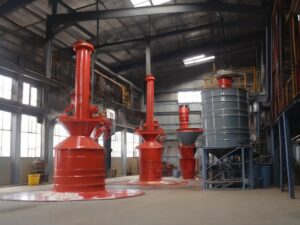Welcome to the Intrinsically Safe Store, your one-stop-shop for all your safety equipment needs. We are dedicated to providing you with the most reliable and up-to-date information on safety protocols and equipment. Today, we delve into the world of emergency response protocols, specifically focusing on Class 1 Division 1 and Class 1 Division 2. We invite you to explore our website for a wide range of safety equipment that adheres to these protocols.
What are Class 1 Divisions?
Class 1 Divisions are classifications defined by the National Electrical Code (NEC) in the United States. They categorize hazardous locations where flammable gases, vapors, or liquids may be present in sufficient quantities to cause an explosion or fire. Understanding these classifications is crucial for selecting the right safety equipment and implementing effective emergency response protocols.
Class 1 Division 1
Class 1 Division 1 (C1D1) refers to locations where hazardous conditions are continuously or intermittently present under normal operating conditions. People could include areas where they handle, process, or use volatile flammable liquids or flammable gases. The design of safety equipment used in these areas must aim to prevent ignition, even under fault conditions.
Case Study: Oil Refinery
For instance, in an oil refinery, areas near distillation columns are typically classified as C1D1. Here, the risk of flammable gases or vapors being present is high. Therefore, designers must design all electrical equipment, including lighting and communication devices, to prevent sparks or high temperatures that could ignite an explosion.
Class 1 Division 2
We refer to locations as Class 1 Division 2 (C1D2) where hazardous conditions are unlikely to exist under normal operating conditions or where hazards are managed in closed containers. These hazards can only escape through accidental rupture or breakdown. Designers should design the safety equipment in these areas to prevent ignition under normal operating conditions.
Case Study: Paint Manufacturing Plant

In a paint manufacturing plant, areas where paint is stored in sealed containers would typically be classified as C1D2. While the paint itself is flammable, the risk of an explosion is low under normal conditions. However, if a container were to rupture, the resulting vapors could create a hazardous situation. Therefore, safety equipment in these areas must be designed to prevent ignition under normal conditions.
Choosing the Right Safety Equipment
Understanding the differences between C1D1 and C1D2 is crucial when selecting safety equipment. At the Intrinsically Safe Store, we offer a wide range of products designed for both classifications. Whether you need lighting, communication devices, or personal protective equipment, you can trust our products to meet the highest safety standards.
Understanding Class 1 Division 1 vs Division 2
Understanding the differences between Class 1 Division 1 and Class 1 Division 2 is crucial for implementing effective emergency response protocols and selecting the right safety equipment. While C1D1 areas require equipment designed to prevent ignition even under fault conditions, C1D2 areas require equipment that prevents ignition under normal operating conditions. By understanding these classifications, you can ensure the safety of your workplace and employees.
For more information on safety equipment that meets these classifications, visit the Intrinsically Safe Store. Our team of experts is ready to assist you in selecting the right equipment for your needs. Contact us today!


